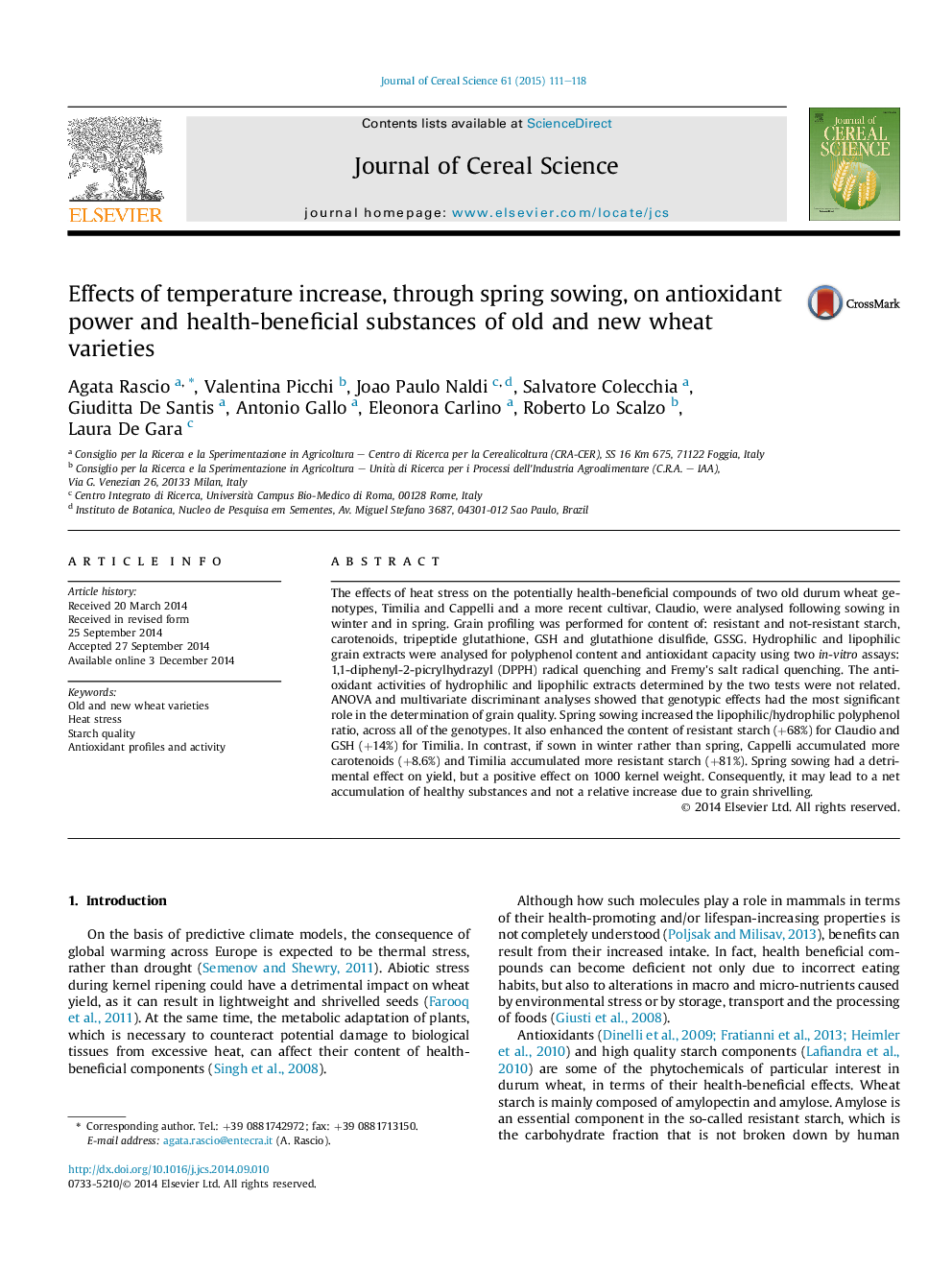| کد مقاله | کد نشریه | سال انتشار | مقاله انگلیسی | نسخه تمام متن |
|---|---|---|---|---|
| 4515707 | 1624901 | 2015 | 8 صفحه PDF | دانلود رایگان |
• Heat stress effects on health-beneficial content of wheat genotypes were analysed.
• The effects of heat stress were analysed following sowing in winter and in spring.
• Genotypic effects had the most relevant role for the determination of grain quality.
• High temperatures had different effects on grain quality depending on the genotype.
• Sowing dates can be used as a tool for specific enrichment of cereal-based foods.
The effects of heat stress on the potentially health-beneficial compounds of two old durum wheat genotypes, Timilia and Cappelli and a more recent cultivar, Claudio, were analysed following sowing in winter and in spring. Grain profiling was performed for content of: resistant and not-resistant starch, carotenoids, tripeptide glutathione, GSH and glutathione disulfide, GSSG. Hydrophilic and lipophilic grain extracts were analysed for polyphenol content and antioxidant capacity using two in-vitro assays: 1,1-diphenyl-2-picrylhydrazyl (DPPH) radical quenching and Fremy's salt radical quenching. The antioxidant activities of hydrophilic and lipophilic extracts determined by the two tests were not related. ANOVA and multivariate discriminant analyses showed that genotypic effects had the most significant role in the determination of grain quality. Spring sowing increased the lipophilic/hydrophilic polyphenol ratio, across all of the genotypes. It also enhanced the content of resistant starch (+68%) for Claudio and GSH (+14%) for Timilia. In contrast, if sown in winter rather than spring, Cappelli accumulated more carotenoids (+8.6%) and Timilia accumulated more resistant starch (+81%). Spring sowing had a detrimental effect on yield, but a positive effect on 1000 kernel weight. Consequently, it may lead to a net accumulation of healthy substances and not a relative increase due to grain shrivelling.
Journal: Journal of Cereal Science - Volume 61, January 2015, Pages 111–118
